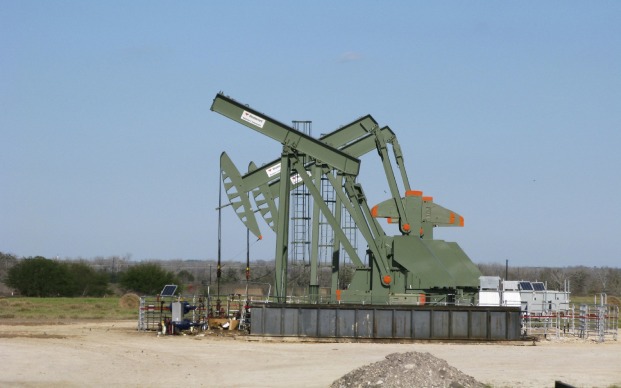Commentary from Florian Ielpo, Head of Macro for Multi Asset at Lombard Odier Investment Managers
- Oil lost some ground in November, the Euro dropped on the pandemic development, and real rates remain negative.
- Oil price drops and falling excess demand are often associated with looming recessions.
- This alignment of planet may lead some bearish observers to see a rising case for a recession.
- However, the recent decline in oil prices is more likely to reflect an increased supply which should help moderate inflation in the coming months, in our view.
Since its high in October, oil has decreased. This fall accompanied with a weakened euro and ever negative real rates could suggest that the market is becoming more bearish. Should we be alarmed?
From a macro perspective, this oil price drop could be concerning. Chart 1 shows the oil price alongside the different US and European recessions that occurred since 1984. It is clear from the graph that a recession (of varying lengths) is traditionally accompanied by an oil price decrease (albeit the converse is not true). For example, in 2008, oil fell 68% and -44% during the 2015 Chinese slowdown.
The latest example was March 2020 where oil fell 54% and was the one and only nowcaster for that recession, when no other data point captured economic activity coming to a stop. The euro weakening as of late on the back of a Covid flare up could be another sign that economic activity is about to slow down. The bearish market observer would see their planets aligning for an upcoming recession.
An argument behind this bearish case could be that oil prices are decreasing as excess demand is decreasing. This is usually a recession signal and also a reason for concern. Graph 2 represents the excess demand of oil (demand minus supply in million barrels per day) along the oil price. The pattern observed is very logical. A positive figure means that there is more demand than supply and price tends to increase just like during the recovery years after the Great Recession.
Recently, we seem to have been revolving around 1 mio barrels of excess demand, explaining the recent rise in the price of oil: demand outmatched supply. On the contrary, when supply outpaces demand, price tends to drop, as they did in 2015-2016. From the data point of June 2021, there is still more demand than supply but the excess demand seems to be on a downward slope. Even if we cannot observe demand and supply for Q4 yet, we see their indirect consequence: price evolution.
Prices over the past four weeks have fallen, which may hint that excess demand has further decreased. This could be either because demand is dropping (which would be concerning) or supply is increasing. So where do we go from here? Panic?
Not quite. We believe that excess demand is decreasing because supply is increasing.
Indeed, the US is planning to release some of its strategic oil reserves, which might push other countries, in particular China, to do the same. This is actually a positive sign that supply is catching up with demand and will ease pressure on consumers.
It very well could be a false alarm as it was the case for the decrease in excess demand of 2005 not accompanied by a decrease in the price of oil: back then from March to August 2005, oil went up 24% while excess demand was falling to a negative territory. Therefore, rather than looking at this price decrease negatively, we merely see a sign that one of the bottlenecks that explains the currently high inflation level is getting resolved.
Finally, growth expectations are still excellent, (the IMF projects 4.9% of global growth for 2022), real rates have gone up from -0.92% (1 November) to -1.17% (9 November) back up to -0.97% (23 November), and fiscal stimulus backlogs still offer a supportive environment.
Simply put, the decline in oil prices at this stage originates more from the supply side than demand: recessions are always accompanied by oil prices decrease but not all oil price decreases are precursors to recessions. Today is more of the latter.
*The views expressed on Industry Announcements are not necessarily the views of
Asia Financial.
*To contribute press releases, research or commentaries, please send an email to
[email protected]
























